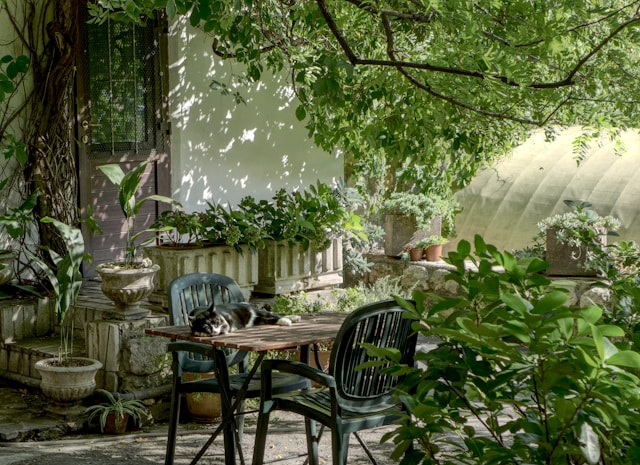Right smack in the middle of summer when the heat is turned up all the way is the perfect time to come indoors, cool down and plan that fall and winter garden. There is really not much time to waste in getting the garden prepared and everything together for planting.
I like to keep my trusty garden assistant included in much of the planning and work. It’s grandmas way of raising a future organic farmer. It is also my hope to compile all the information you need to plan your fall and winter garden on one page.
The first thing we learn is the garden zones
Everyone is in a zone that reflects the climate where you live. There are some areas that have a shorter growing season and some areas that can garden year round and many that are in between. You can use the Farmers Almanac to find your zone by simply clicking your state on the map.
The success of your fall garden is really all about timing. You will be counting down to the first average frost date for your area. You can also use the Farmers Almanac to find out what your average frost dates are.
Keeping in mind that weather can be unpredictable, we can still have a good harvest in fall if we break down the hardiness and maturing dates of the crops we want to grow. We can do that by breaking it down into two simple groups.
First, there are the Long Term Crops, which means they are plants that will grow longer into the season and hold up to some frosty weather depending on their hardiness. These are usually your leafy greens and some of the root crops. Frost-tolerant vegetables include beets, broccoli, Brussels sprouts, cabbage, carrots, cauliflower, chard, collards, garlic, kale, lettuce, mustard, onions, parsley, spinach, and turnips.
Second is the Short Term Crops, which simply means they are the plants to can be easily killed by frost. Your zone may still allow for time to grow many short term crops but you may have to be prepared to help protect them or harvest them early. Examples of short term crops are things like beans, cantaloupes, corn, cucumbers, eggplants, okra, peas, peppers, Irish potatoes, sweet potatoes, squash, tomatoes, and watermelons.
Maturing Dates In Three Simple Categories
Knowing the maturing dates for your vegetables can also help you to understand how long each crop will take before it is ready to begin harvesting. This, of course, will depend on the weather as well, but we can break those maturing dates into three simple categories.
There is the quick veggies that don’t take long to grow what so ever, the moderate and the slow that takes much more time before they are mature enough to harvest.
Once we have a good idea about the maturing times we can think about some fall harvesting helpers and they don’t have to be mature. They just need to have fun and learn where their food comes from.
First, we have the Quick Crops which will mature within (30 – 60 days) Examples of this group are beets. bush beans, leaf lettuce, mustard, radishes, spinach, summer squash, and turnips.
The Moderate Crops which will mature within (60 – 80 days) are broccoli, Chinese cabbage, carrots, cucumbers, corn, green onions, kohlrabi, lima bush beans, okra, parsley, peppers, and cherry tomatoes.
The Slow Crops will mature within (80 days or longer) and they include things like Brussels sprouts, bulb onions, cabbage, cantaloupes, cauliflower, eggplant, garlic, Irish potatoes, pumpkins, sweet potatoes, tomatoes, watermelon and winter squash. You can find more information written by Prof. Jerry Parsons and Prof. Larry Stein and available at Aggie Horticulture.
Your Local County Extension Office will be able to provide you with information that will detail what varieties and planting dates are recommended for your area.
Be sure to check with some of your Heirloom Seed Companies as well to participate in preserving some historical varieties.
Here are some direct seeding guides for planting dates in Texas from Aggie Horticulture. So make your list and check it twice. The most fun part of the garden is selecting new seed varieties. You will still be left with the hard work of planning your garden space and getting it ready to plant. I hope to talk more about that soon so be sure to check back.
Happy Gardening!
- Wild Dagga Motherwort Medicinal Herb - November 11, 2013
- Grow The Best Organic Lettuce - November 4, 2013
- Amish Hot Pepper Mustard - October 23, 2013


Thanks for a great article. It is also good to check with your local master gardener program through the agriculture extension office. Master gardener programs have people that actually plant and harvest which makes their experience much more valuable to a successful garden.
A great book for Texans is ‘Texas Organic Vegetable Gardening’ by Howard Garrett and Malcolm Beck. I have studied under both and their organic advice has been full-proof to me over the 30 years I have practiced organic gardening.
Thanks Pam for a great job of sharing your organic gardening experiences.
Oh Great Advice Leslie!!! You are sooo right about the Master Gardener Programs! Some very wonderful people! I just love Howard Garrett and Malcolm Beck! I’m so glad you brought up that book! Everyone needs to read it!! Thanks Leslie!!!